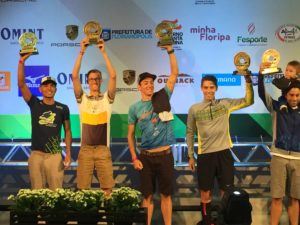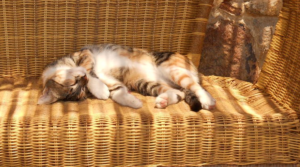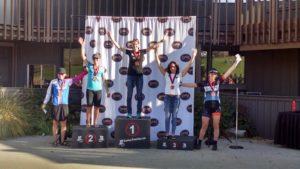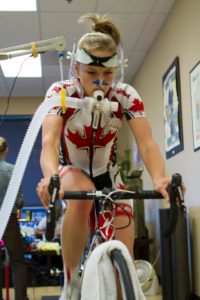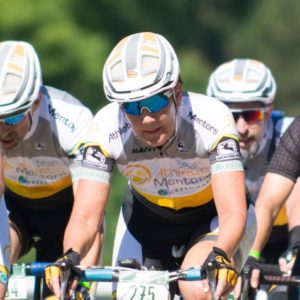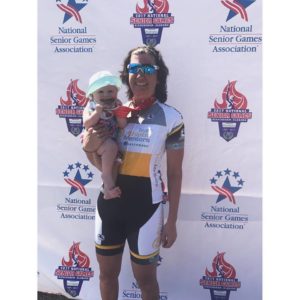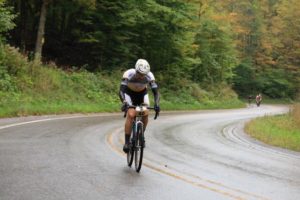This blog is a continuation from my last blog post “My Kona Journey: Part 6”. I would suggest reading that blog before reading this one.
“Make sure your worst enemy doesn’t live between your own two ears.”
– Laird Hamilton
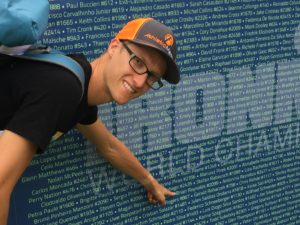
My summer racing and training was going really well heading into mid September. Based on my key bike workouts, I felt that I was on track for achieving my 5 hour time goal for the bike course at Kona. In fact, the day after the Reeds Lake Triathlon, I had my best 100 mile power average ever! That 100 mile ride gave me confidence that my fitness was where it needed to be for Kona. However, that confidence began to wane heading into Kona.
The last 5 weeks leading up to the big race were the most physically and mentally draining block of training I had experienced. With all honesty, I was just having bad workouts. I especially struggled with big brick workouts each weekend. These workouts included a 4 to 5 hour bike ride followed by a 30 to 50 minute run. I really struggled to hit my power or pace targets during some of these big workouts. For instance, I recall one workout where I had to do a 100 mile time trial followed by a 1:10 hour run. It just so happened that the temperatures were in the 80s and 90s on that day. At the time I thought the sunny hot weather would be a good thing since it would be great preparation for Kona. The hot weather would allow me to test out my nutrition plan and pacing. In addition, the heat would test my physical and mental limits. I can assure you, my limits were tested!
When I started the 100 mile time trial, I could tell early in the ride that my legs were not going to cooperate, causing me to ride well below my goal power. In fact, the average power that I was able to hold was 30 watts lower than my Ironman goal power. It was hard to stay mentally focused when I was not physically able to ride to my full capability. On the positive side, I was able to stay cool and stay on my nutrition plan since the intensity of the ride was low. Unfortunately, I felt worse as the ride progressed, so I decided to just call it a day on the bike and cut the ride short to 73 miles. This was the first ride I had to shorten due to fatigue during my training.
After the shorten bike ride I changed into my run gear and started my 1:10 hour run. The run was broken up into 3x 20 min at 15 – 20 seconds faster than Ironman pace with 2 minute recoveries. When I started the run I was really “feeling” the heat since I didn’t have that 20 mph breeze like I did for the bike. It was in the low 90s with no cloud cover and no wind. I thought to myself “this weather will be very similar to Kona”. To help stay cool I threw ice and cold water down my tri kit since Kona would have these items at aid stations. I was only able to get relief for 5 minutes until a;; the ice in my tri kit melted. During the 20 minute intervals, I was able to hold between 6:45- 6:55 pace but the perceived effort was very hard. My body had to work extra hard stay cool and overcome a fatigued body. The heat really got to me during the last 10 minutes of each interval. After each interval, I rested in the shade and put ice and cold water in my tri kit to stay cool. During the run it was a challenge to take in calories without getting an upset stomach due to the heat. This was one of the hardest runs of the year for me! When I finished the run I was glad that it was over but was disappointed that I was not able to do better.
The following day after my big brick workout I did a 2:40 hour long run. My long run would again be in the high 80s. However, this workout went better than yesterday’s suffer-fest. I was able to hold my Ironman goal pace and stay cooler during the run. It made a huge difference not doing a 3:30 hour ride before the run. I was able to get in 22 miles for the run, stay hydrated and fueled.
I realized that my body was just getting fatigued from the long Ironman season. Doing Ironman Brasil in the late spring and then training for another Ironman in October was new territory for me, so I wasn’t sure how my body would respond. One thing is for sure is my body was telling me to start tapering. So, three weeks before Kona, I began cutting back on my training volume. When I started the taper, I was beginning to feel more like my normal self again. Finally, I was having good workouts again and I had my mental motivation back again.
One week before Kona I flew out to the Big Island of Hawaii. I was very fortunate to have my father, Aunt, and 2nd cousin with me during the 10 days in Hawaii. We stayed in a nice condo resort in Waikoloa Beach Village area which was right off the Queen K highway. This was a good spot for training since I could ride on Queen K which was part of the bike course.
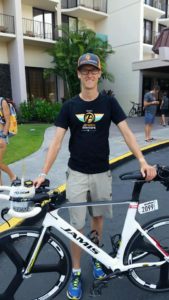
I rode the course a few times to get an idea of how my bike would handle in the crosswinds. Kona is known for having significant crosswinds that can change on a dime. On Tuesday, I rode 1.5 hours from my Condo to the turnaround point in Hawi. When I started the ride I was fighting a stiff 15-25 mph cross wind. Several times the wind turned into a headwind or sometimes a tailwind. After 45 minutes of riding I started the climb up to Hawi. The climb was a gradual incline. There are a few steeper sections where I could get out of my aero position and sit up on the bike. The hardest part was fighting the strong 20-30 mph headwinds and crosswinds. Overall, I thought the terrain of the course was not hard but rather the elements of the race such as the wind, heat, sun, and no shade is what makes this course challenging.
After the 1.5 hour bike I did a 20 min run off the bike which felt great. This was my last “long” brick workout before the race which I thought went well. I felt that physical and mentally strong. The taper and rest was exactly what I needed.
Two days before the race I did a 30 minute open water swim in Kailua Bay. 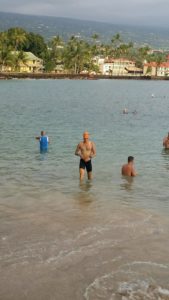 The water temperature was around 80-81°F which was warm enough to not allow wetsuits. For the race I will wear a speed suit instead. One benefit of swimming in the Pacific is the salt water will help keep you more buoyant. The water in the Bay was very clear so you could see all the sealife below. When I was swimming from the pier the water was calm for the first 200 yards. Once I got more out into the ocean there were waves that began to push me around a little. In addition, the tides kept me constantly moving up and down which caused me to get a little motion dizziness. Hopefully I don’t get seasick during the race! I had to be extra careful not to swallow or get any saltwater in my month. This 2.4 mile swim in Kona will be the most challenging of any Ironman race I’ve done. Knowing that I will be swimming with the best Ironman athletes in the world, I needed to be on top of my game.
The water temperature was around 80-81°F which was warm enough to not allow wetsuits. For the race I will wear a speed suit instead. One benefit of swimming in the Pacific is the salt water will help keep you more buoyant. The water in the Bay was very clear so you could see all the sealife below. When I was swimming from the pier the water was calm for the first 200 yards. Once I got more out into the ocean there were waves that began to push me around a little. In addition, the tides kept me constantly moving up and down which caused me to get a little motion dizziness. Hopefully I don’t get seasick during the race! I had to be extra careful not to swallow or get any saltwater in my month. This 2.4 mile swim in Kona will be the most challenging of any Ironman race I’ve done. Knowing that I will be swimming with the best Ironman athletes in the world, I needed to be on top of my game.
The final day before the race we had to check in our bike and equipment. It was a spectacle just to witness the bike check-in process. It felt like the red carpet in Hollywood.
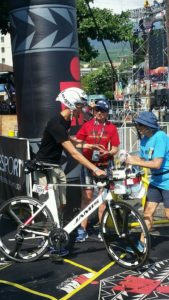 Everyone was gathered around the fence to check out the Pro and age group athletes walk in. They had an announcer calling out all the athletes as they walked into the transition area. When I entered the transition I had my own volunteer to escort me around the entire check-in process. I had photographers take a picture of my bike so Ironman determine the total count of bikes and equipment that people are using for the race. After the photoshoot, the volunteer walked me out to my transition spot. I mounted my bike and placed my bike and run bags in the changing tent area. The transition area and changing tent were very condensed. On race day the changing tent would be very crowded.. Other than the space issue I felt like a VIP during the check-in process.
Everyone was gathered around the fence to check out the Pro and age group athletes walk in. They had an announcer calling out all the athletes as they walked into the transition area. When I entered the transition I had my own volunteer to escort me around the entire check-in process. I had photographers take a picture of my bike so Ironman determine the total count of bikes and equipment that people are using for the race. After the photoshoot, the volunteer walked me out to my transition spot. I mounted my bike and placed my bike and run bags in the changing tent area. The transition area and changing tent were very condensed. On race day the changing tent would be very crowded.. Other than the space issue I felt like a VIP during the check-in process.
After the bike check-in I went back to the condo to eat and get things ready for the race. On race morning, I like to have everything ready to go so I can try to get extra sleep. I prepared my Infinit nutrition bottles for the bike and run. Similar to Ironman Brasil, I plan on having 5 bottles on the bike plus one extra bottle in special needs, just in case. The special needs bag will be placed at the turnaround point in Hawi. For the run I prepared 5 flask bottles. I plan on carrying 3 flasks with me coming out of T2 and picking up 2 more flasks at the special needs which was located at mile 18. I plan on keeping my calorie consumption per hour the same as Ironman Brasil, but I plan on drinking more water. I had all my shoes, race kits, electronics, race numbers, and timing chip laid out on the floor.
I had a lot of nervous energy running through my body considering it was the biggest race in my triathlon career. I felt relaxed and calm during the final days leading up to the race but now that the race was less than 24 hours away it was hard to keep calm. For me, it’s hard to not be nervous before a race that I deeply care about… especially if it’s a race that I’ve been dreaming of doing for a long time. I just tried to embrace the nervous energy and the moment that would be in store for me tomorrow.
To be continued….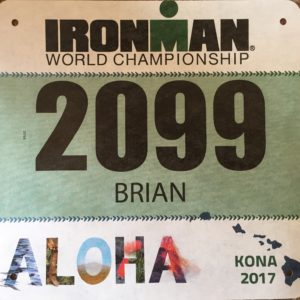
The post My Kona Journey: Part 7 appeared first on Team Athletic Mentors.

 These aspects of the “biological clock” are influenced by outside cues, like light, sound and other stimuli. It’s best to allow the body time to adjust away from this alert state. As the evening hours begin, dim or shut off lights within the house. If spending time on the computer shortly before bed, consider installing a program that removes blue light to lower stimulation. Do some relaxing activity before sleeping, like reading a book or taking a bath. Not only should work be avoided as you’re approaching bedtime, but also exercise or other activities that keep the body charged up.
These aspects of the “biological clock” are influenced by outside cues, like light, sound and other stimuli. It’s best to allow the body time to adjust away from this alert state. As the evening hours begin, dim or shut off lights within the house. If spending time on the computer shortly before bed, consider installing a program that removes blue light to lower stimulation. Do some relaxing activity before sleeping, like reading a book or taking a bath. Not only should work be avoided as you’re approaching bedtime, but also exercise or other activities that keep the body charged up.




 Our Hockey Site
Our Hockey Site Team AM
Team AM





 Everyone was gathered around the fence to check out the Pro and age group athletes walk in. They had an announcer calling out all the athletes as they walked into the transition area. When I entered the transition I had my own volunteer to escort me around the entire check-in process. I had photographers take a picture of my bike so Ironman determine the total count of bikes and equipment that people are using for the race. After the photoshoot, the volunteer walked me out to my transition spot. I mounted my bike and placed my bike and run bags in the changing tent area. The transition area and changing tent were very condensed. On race day the changing tent would be very crowded.. Other than the space issue I felt like a VIP during the check-in process.
Everyone was gathered around the fence to check out the Pro and age group athletes walk in. They had an announcer calling out all the athletes as they walked into the transition area. When I entered the transition I had my own volunteer to escort me around the entire check-in process. I had photographers take a picture of my bike so Ironman determine the total count of bikes and equipment that people are using for the race. After the photoshoot, the volunteer walked me out to my transition spot. I mounted my bike and placed my bike and run bags in the changing tent area. The transition area and changing tent were very condensed. On race day the changing tent would be very crowded.. Other than the space issue I felt like a VIP during the check-in process.
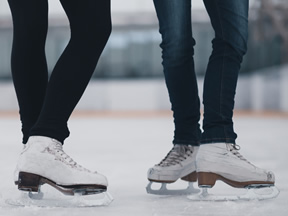
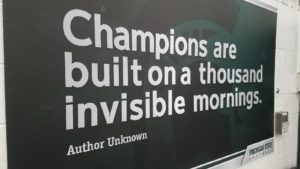
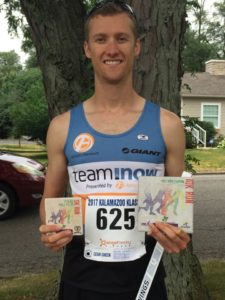
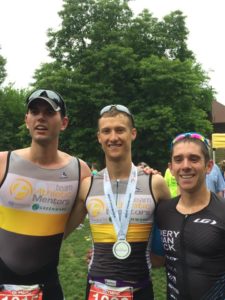
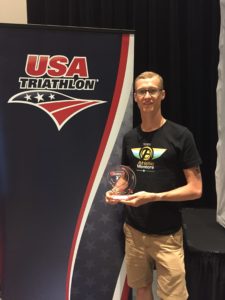
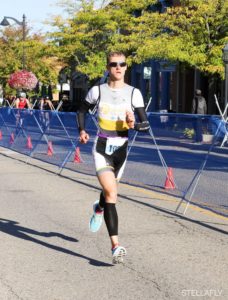
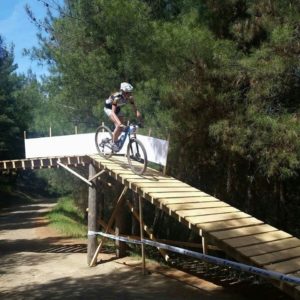
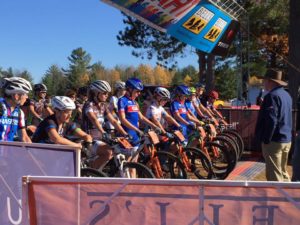
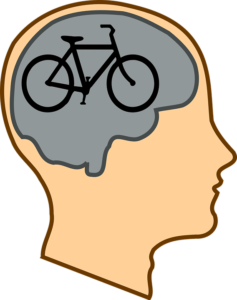
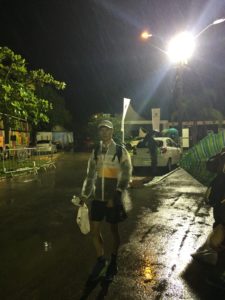
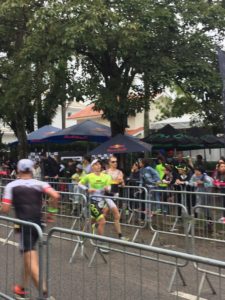
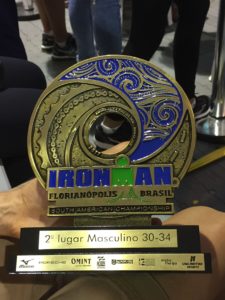
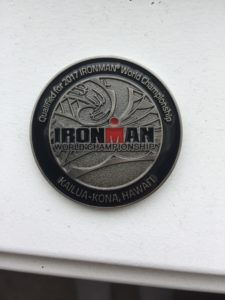
 Overall Ironman Brasil was a huge success! I accomplished my main goal which was to qualify for Kona. Anything more was just icing on the cake. Now I had a place to be on October 14th, 2017 which was at the pier in Kailua-Kona, Hawaii.
Overall Ironman Brasil was a huge success! I accomplished my main goal which was to qualify for Kona. Anything more was just icing on the cake. Now I had a place to be on October 14th, 2017 which was at the pier in Kailua-Kona, Hawaii.